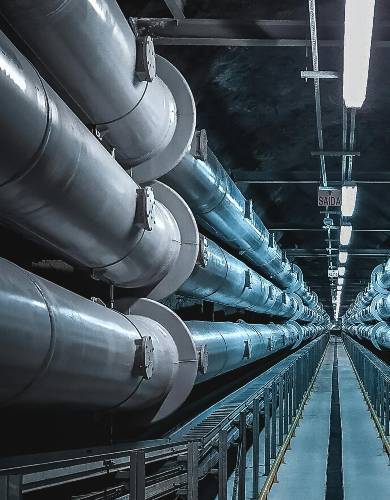The Smart Export Guarantee
The Smart Export Guarantee is a government initiative allowing British property owners to generate renewable energy and sell it back to the national grid. The Smart Export Guarantee incentivises private investment into small-scale renewable energy projects by allowing properties to get paid for any generated energy.
If your home or business generates its energy, the Smart Export Guarantee is excellent, allowing you to get paid for surplus energy generation.
What is the Smart Export Guarantee?
The Smart Export Guarantee commenced on 1 January 2020 to replace the Feed-in tariff scheme. The scheme allows small-scale renewable business energy generators to export the electricity or gas produced into the local electricity distribution network. The Smart Export Guarantee is a type of business energy grant.
The Smart Export Guarantee scheme is available to renewable energy generators that have up to 5MW in capacity. As an idea, this is equivalent to a solar farm containing 20,000 solar panels or enough capacity to power 1,000 homes.
This generous upper limit to capacity makes it ideal for business properties that wish to participate in the scheme.
The Smart Export Guarantee allows the sale of power generated from the following projects:
- Solar Voltaic
- Hydro
- Micro-combined heat and power (albeit with a lower max capacity of 50kW)
- Onshore wind
- Anaerobic digestion
How does the Smart Export Guarantee work?
The Smart Export Guarantee requires larger business energy suppliers to provide an export tariff available to businesses with solar panels and households that want to use the scheme. Unlike the Feed-in tariff scheme, the government does not fix the Smart Export tariff rates. Electricity suppliers compete to offer the best tariffs.
To use the scheme, it’s necessary to export to a particular supplier. The application process will usually require the following documentation:
- A valid MCS Certificate
- Proof of identification
- Proof of address
- A photograph of your export meter
- VAT registration certificate
Upon successful application, your business energy supplier will assign you a unique code used in the energy industry to identify supply points, called an export MPAN.
Once your Smart Export Guarantee tariff has commenced, you’ll be paid for the energy you export based on your meter readings.
It is possible to have an energy supply contract with one supplier and an export tariff with a different supplier.
Who is eligible for the Smart Export Guarantee?
To be eligible for the Smart Export Guarantee, it’s necessary to satisfy the following conditions:
- You are the owner of an eligible power generation unit.
- The capacity of your renewable energy unit is less than 5MW.
- The power generation unit has a smart or half-hourly meter that can record electricity exported to the grid on a half-hourly basis.
- Your installation is certified with a Microgeneration Certification Scheme.
- You’ve opted out of any Feed-in Tariff export program you’ve previously participated in.
- You do not receive Smart Export Guarantee payments from any other supplier.
What types of Smart Export Guarantee tariffs are there?
The Smart Export Guarantee scheme allows business energy suppliers to design and price their export tariffs. The only restriction the government applies is that the supplier must always pay for exported energy.
The types of tariffs available in the market are:
- Variable – The amount paid depends on current wholesale market prices for electricity.
- Fixed – An agreed fixed business electricity rates per kWh of exported power.
A key differentiating factor is the frequency of payments. Some suppliers pay monthly, others quarterly or annually.
How long does the smart export guarantee last?
Unlike the Feed-in tariff scheme, the smart export guarantee doesn’t last for a fixed period. Each business energy supplier is free to offer its own contract duration. Typically suppliers offer a 12-month contract.
What is the difference between the Smart Export Guarantee and Feed-In tariff?
The Smart Export Guarantee is a direct replacement for the Feed-in Tariff scheme. It’s not possible to benefit from both at the same time.
The key difference between schemes is that the Feed-in tariff is much more generous with rates set by the government. The government set the rates for the Feed-in tariff artificially high to encourage investment in renewable technologies.
Installation of green power generation is now much cheaper and is viable without government subsidies, so the pricing of the Smart Export Guarantee is determined by the deregulated market.
Here are the key differences between the Smart Export Guarantee and the Feed-in Tariff:
- The government sets the Feed-in tariff rates and fixed for 10-20 years.
- The market determines the Smart Export Guarantee tariffs with business energy suppliers competing for business.
- The Feed-in tariff payment consisted of both generation and export payments. Under the Smart Export Guarantee, you only receive export payments.
- The Smart Export Guarantee requires a half-hourly export meter to accurately measure the quantity of exported energy.
Which companies have Smart Export Guarantee tariffs?
From: 1 April 2023 to 31 March 2024, the following suppliers have SEG tariffs available:
- British Gas
- E (Gas & Electricity)
- E.ON
- EDF
- ESB
- Octopus Energy
- OVO Energy
- Scottish Power
- Shell Energy
- The Utility Warehouse
- Utilita
Voluntary SEG Licensees:
- Pozitive Energy
- Rebel Energy
Upon successful application, your business energy supplier will assign you a unique code used in the energy industry to identify supply points, called an Export MPAN.
Once your Smart Export Guarantee tariff has commenced, you will be paid for the energy you export based on your meter readings.
It is possible to have a business energy tariff with one supplier and an export tariff with a different supplier. Smart Export Guarantee participants can compare business electricity and gas suppliers as they would usually rather than being stuck with their Smart Export provider.
Smart Export Guarantee – FAQs
Here are the most commonly asked questions, answered for you!
What is the Microgeneration Certification?
Microgeneration certification is required if you plan to export renewable electricity or gas under the Smart Export Guarantee. The certification proves to a business energy supplier that your renewable power generation meets all relevant engineering and legal standards required in the UK.
For more information on the Microgeneration Standards, see the website here.
Is the SEG mandatory for energy suppliers?
The Smart Export Guarantee is not mandatory for energy suppliers in the UK. However, as of 1 January 2020, energy suppliers with over 150,000 customers must offer an SEG tariff to their customers with eligible installations.
Smaller suppliers may choose to offer SEG tariffs voluntarily. If you have a solar panel or other eligible renewable energy installation, you should be able to choose from a range of SEG tariffs offered by different energy suppliers.
How much will I get paid for exporting excess electricity under the SEG?
The amount you will be paid for exporting excess electricity under the Smart Export Guarantee will depend on the tariff offered by your energy supplier. Unlike the previous Feed-in Tariff (FiT), the SEG does not set a fixed rate for exported electricity. Instead, energy suppliers can set their tariffs within specific parameters.
Some suppliers may offer variable rates that change over time, so carefully check the terms and conditions before choosing a tariff.
It’s also worth noting that SEG payments are currently only available for installations up to 5MW in capacity and that some energy suppliers may impose a minimum export threshold before payments are made.
Looking to save money on your business energy bill?
Use one of our comparison services below:
Business electricity prices
Business energy comparison
Compare business gas prices
Small business energy

